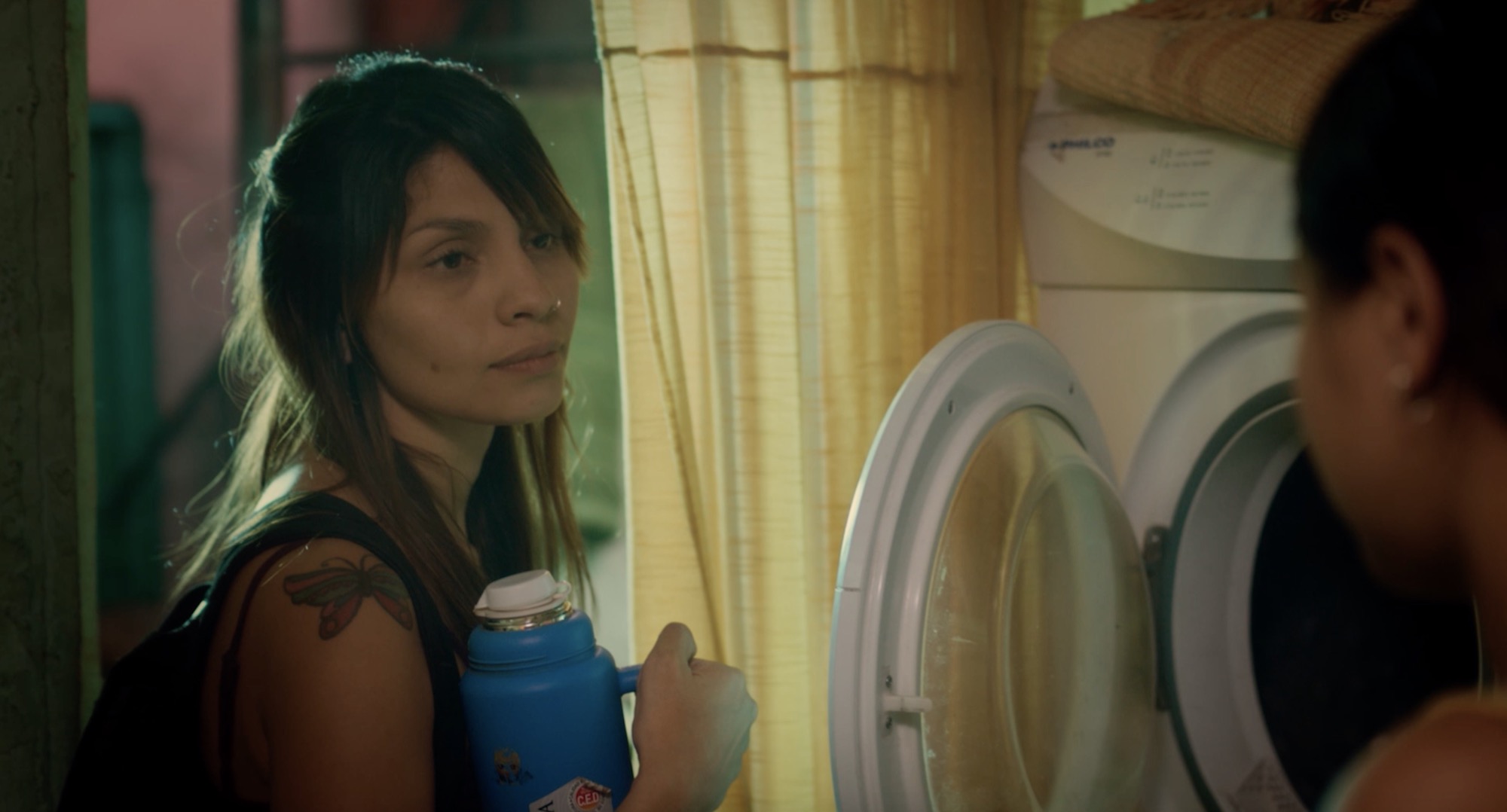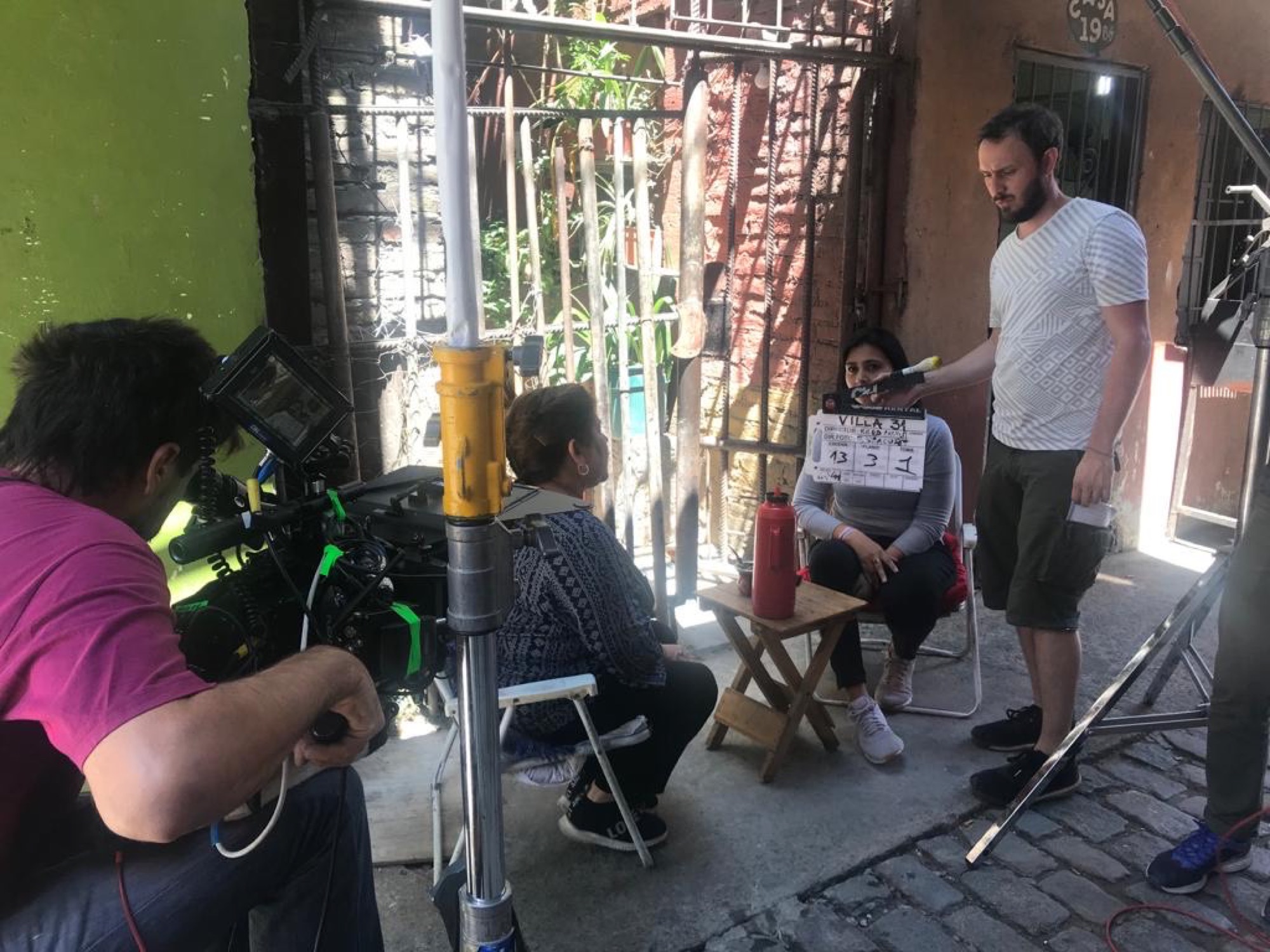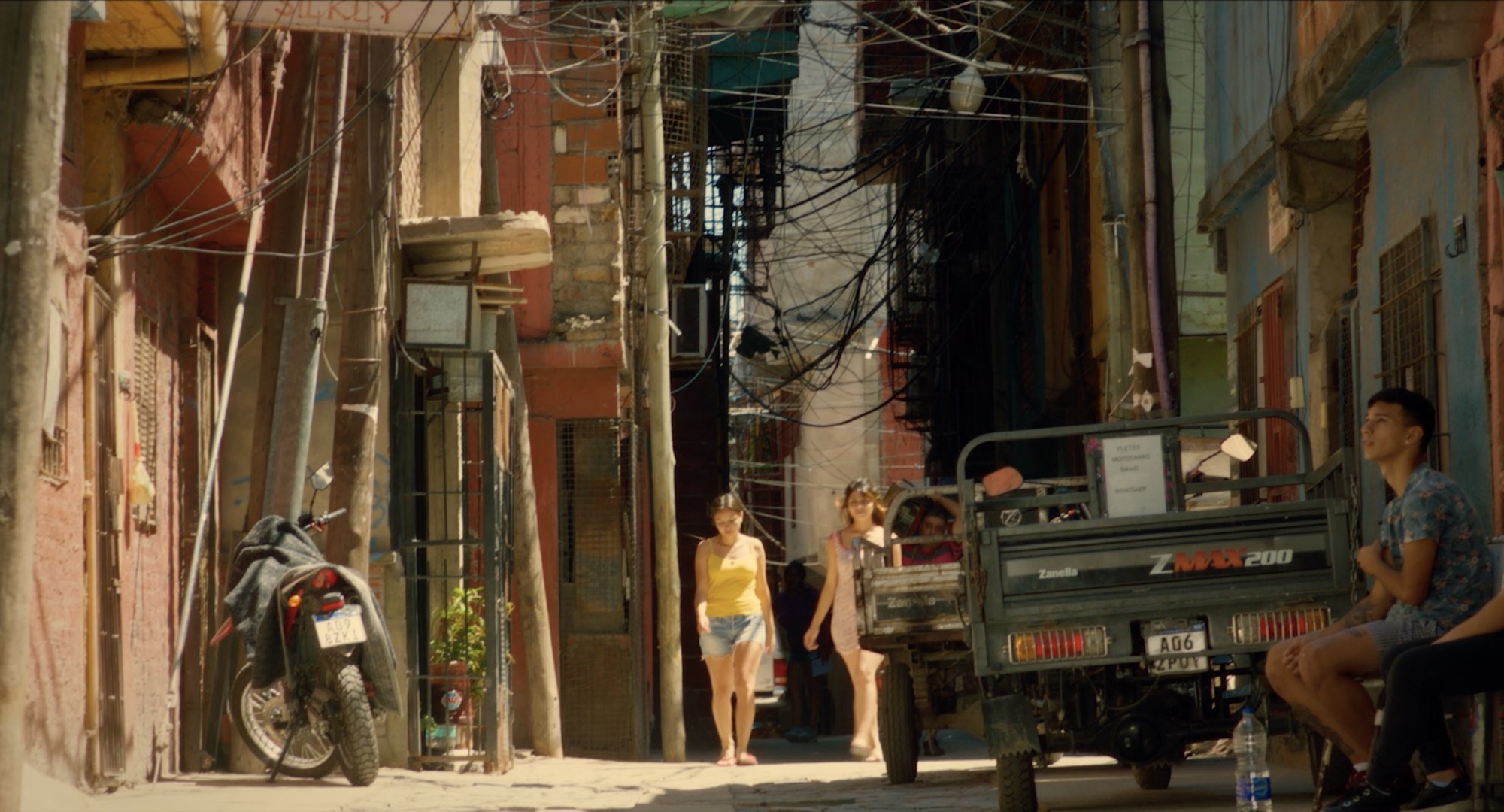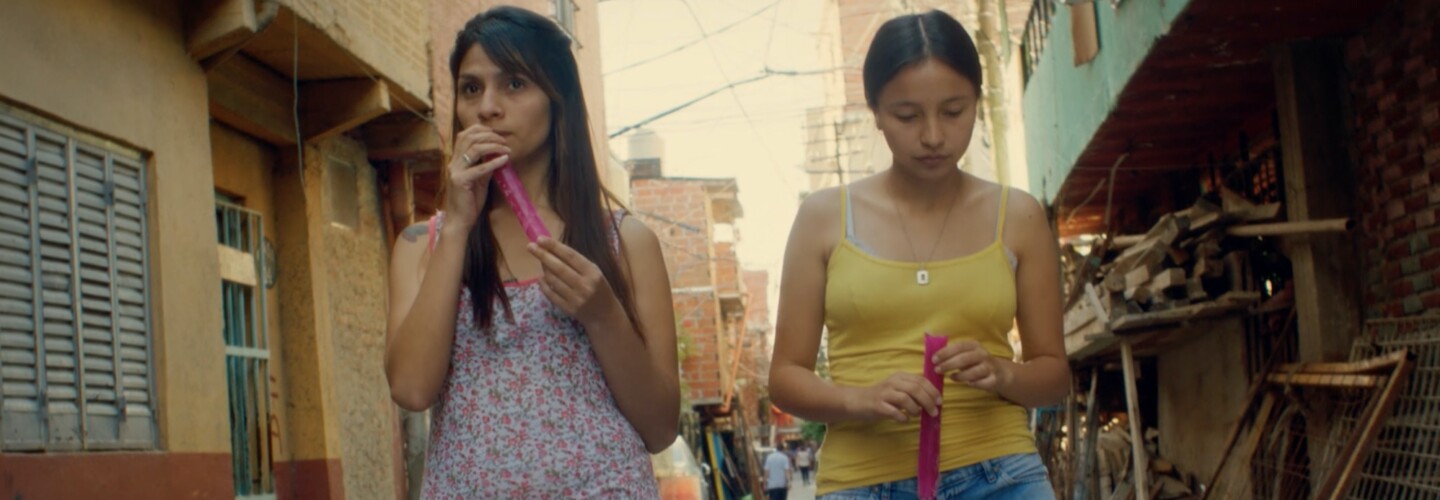
A considered and sensitive snapshot of rural to urban migration in Argentina and informed by his own lived experience, Director Reed Purvis’ Barrio Frontera is a beautifully crafted portrayal of the culture clash experienced by those migrants who make the decision to leave the familiar for the new in pursuit of a life with more opportunities for them and their families back home. Purvis spent a year living in the exact barrio in Buenos Aires where his short was filmed and was drawn to a young woman whose observations of the area reflected her otherness and sparked the idea for the film. Barrio Frontera envelops us into the daily comings and goings of a bustling inner city barrio with local non-actors firmly establishing the realism of this authentic exploration of life within such communities. Our protagonist Marisel, impressively played by Florencia Salas, the only trained actor in the piece, sits within scenes and conversations taken from the lives of those who share the screen with her. The resulting film is a love letter to the strength of community in places where this is of utmost importance. Watch Barrio Frontera below after which Purvis joins us in conversation where we speak about focusing on the day-to-day life of his characters and timing his shoots to the rhythms of the barrio.
What was the spark that turned your lived experience into the short film Barrio Frontera?
The initial concept for the film is based on the story of people moving to the city from rural areas both within Argentina and from neighboring countries. I lived on the street where the short is filmed and there was a young teenage girl, similar to the character in the short, who would stare out the doorway (the same doorway that’s featured at the end of the film), observing the neighborhood and the street below. She wasn’t observing the neighborhood the same way someone who had lived there would and it made an impression on me. She had arrived from a rural area in Paraguay and had never seen a neighborhood quite like that or lived in a big city.
I really wanted to keep this film grounded in realism and we worked with all non-actors from the neighborhood except for the protagonist, Marisel. Many of the secondary characters are friends and neighbors that I have known for a long time. The dialogue and material are based on real stories and daily life there and we tried to make it as much of a collaborative process with the community as possible.
There are so many different ways you could have told the story, what drew you to focus on the more mundane aspects of the day-to-day life of this young migrant?
That’s what I had the most personal experience with; daily life in this neighborhood. This is also what interested me the most, exploring what it’s like for someone to adjust to the daily rhythms of life there, the social customs, the relations with neighbors and the fear and the unknown that goes along with that. People’s lives usually change dramatically with such a move and although they miss the rural areas where they came from, they usually prefer the city culture once they have lived in the city for a certain amount of time.

How did you find the reception of the community when you approached them about the film and shooting in the barrio?
Going into pre-production I knew a lot of people in the neighborhood already but the community was even more welcoming than I had predicted. I didn’t expect for example that my friend Edgar and his family would be interested in letting us use their house as a main base of production as well as the primary filming location. They were compensated of course but a film production can be quite disruptive to daily life so it was still beyond what I had imagined.
The characters were discussing and performing things from their daily lives as opposed to playing another character.
The performances are beautiful, what was your approach to working with the non-actors to capture that natural authenticity?
We had rehearsals which really helped a lot. But we only rehearsed with the two protagonists and the two women chatting, sharing mate. The rehearsal with the older chatty woman (Elsa) actually only served to help me realize that the other woman just needed to ask her questions to get her going and to tell the story in her own words. I also think the main factor that allowed things to feel authentic was that the characters were discussing and performing things from their daily lives as opposed to playing another character.

I love that scene with the two women sharing a mate and talking directly about their experiences, how did that exchange come about?
The older chatty woman, Elsa, literally sits there almost every afternoon with her husband and whoever comes by to chat. So her story about feeling like a foreigner in her own country after living in Argentina for so long is actually a story I heard her tell and many of the neighbors have heard her tell it as well. I thought it was an interesting conversation to include in the film and luckily she can’t help but be herself whether or not there’s a camera there, so she’s not even really acting in that scene.
In terms of the actual shooting days, what were the challenges or perhaps advantages of shooting in such a busy, urban environment where you had little control?
Principal cinematography was fives days and we had an extra day of shooting to capture shots of the neighborhood and more of the atmosphere of the streets. One of the advantages was having people walking down the street, passing in front of the camera, and kids playing in the street, which helps it look real. The flip side of that was shooting some of the street scenes. We had to shoot at a specific time before kids began arriving home from school in the afternoon and before people began arriving home from work. There’s just too many people at that time of day and it would have made filming very difficult.

Alongside the vibrancy of the colours there’s a clear grounded realism to Barrio Frontera’s visuals, giving us a feeling of being quite cloistered and enclosed in the neighbourhood. How did you arrive at that aesthetic for the film?
We tried to show a modern style of cinematography, letting the vibrant colors of the neighborhood stand out while maintaining a gritty realism feel. We shot on an Alexi mini with Zeiss super speeds and shot mostly handheld but with the aid of an easy rig without using any camera stabilization devices. The lighting was minimal just for the night scenes and for the day scenes we used available natural light. I wanted to show as many details of the houses and streets as possible to try and overwhelm the viewer or give them a sense of enclosure within the neighborhood because that is actually what it feels like to be there. The director of photography and I sent various examples back and forth, watched various clips of films and reached an agreement on the style of photography we wanted to achieve.
I wanted to show as many details of the houses and streets as possible to try and overwhelm the viewer or give them a sense of enclosure within the neighborhood.

I love the sound design and feel it really brings us into the film. You can really feel the rich world of the numerous lives unfolding there through the deeply layered noises of the barrio.
We captured many of them during production, such as the bingo at the end. There were others I added while editing and the sound editor did a really good job of adding more ambient sounds to really fill in the scenes. For example, some of the interior night scenes we had to shoot during the day and so the background sounds that you would normally hear at night weren’t there so those were added during post-production.
What are you exploring next, another story from your personal experience?
I’m writing a feature film that’s partially based on this short but with a mix of other stories. It focuses on deforestation and the eviction of small scale farmers by large scale agricultural producers and how these broken communities reform into new communities in the city. I’m also working on developing several shorts, one of which is set in a different neighborhood in Buenos Aires.


